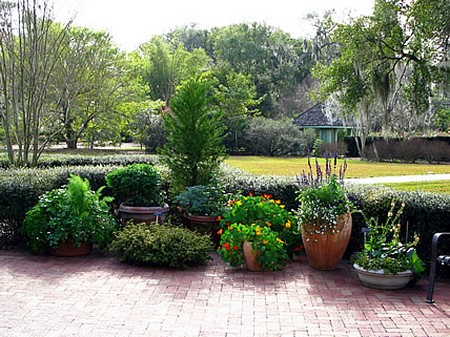Never forget that it is just as important to match plant needs to the site when growing in containers as it is when planting direct into beds and borders.
The containers
The size of container is very important. As a rule-of-thumb guide, set out single specimen trees or shrubs into containers two sizes up from that in which they were growing in the nursery. However, bear in mind that long-stay plants will need potting on annually into larger containers, until eventually average-sized mature trees will be growing in a container of 35 – 40 cm (14 – 16 in) in diameter. It takes a lot of compost to sustain and anchor mature trees and shrubs. Wide-based containers (wider than high) are more wind stable and less likely to blow over than tall narrow ones.

Good drainage too is vital to success, so ensure that there are plenty of drainage holes in the base of the container.
Wash, scrub and disinfect any container being reused. Soak new containers of concrete, simulated stone and terracotta in clean water for at least 24 hours before filling. This washes out any harmful salts and rehydrates the container so that it does not rob the potting compost of moisture in the early days after planting.
Planting
Cover the drainage holes with fine mesh netting, wired into position to secure. This prevents the wash-through of potting compost and blocks the entry of worms, pests and insects. Bottom out containers with clean stones or broken pieces of polystyrene for drainage. Part fill with soil-based potting compost, using lime-free mixtures for lime haters like rhododendrons. Peat-based composts are best reserved for short-term container plants that are going to be moved on, or disposed of, within six months. After this time, peat-based mixtures lose condition and are very difficult to manage, as indeed they are during winter.
Prepare plants for planting, same as for direct planting. Position the plant with rootball resting on the potting compost. Underpack with more compost so that the top of the rootball rests about 2.5 cm (1 in) below the rim of the container. Work potting compost around the sides of the rootball and firm. Topdress with more potting compost by scattering a handful or two around the stem, leaving a space of 2 cm for watering. Water in to settle the compost.